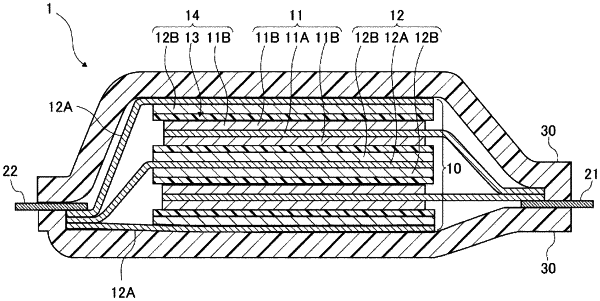| CPC H01M 4/366 (2013.01) [H01M 4/13 (2013.01); H01M 4/622 (2013.01); H01M 4/625 (2013.01); H01M 10/0525 (2013.01); H01M 50/409 (2021.01); H01M 50/411 (2021.01); H01M 2004/021 (2013.01); H01M 2004/028 (2013.01); H01M 50/489 (2021.01); H01M 50/491 (2021.01)] | 8 Claims |

|
1. A positive electrode for a lithium ion secondary battery, the positive electrode comprising:
a positive electrode current collector; and
a positive electrode mixture layer that is provided on at least one side of the positive electrode current collector, the positive electrode mixture layer including:
a positive electrode active material layer, and
an undercoat layer formed between the positive electrode current collector and the positive electrode active material layer, the undercoat layer containing:
a conductive auxiliary,
a binder,
a thermally expandable microcapsule having a maximum volume expansion temperature of from 70° C. to 180° C., and
a polymer particle having a softening point of from 70° C. to 150° C.,
wherein the softening point of the polymer particle is lower than the maximum volume expansion temperature of the thermally expandable microcapsule,
the polymer particle has an average particle size of from 0.1 to 5 μm, and
a content of the polymer particle in the undercoat layer is from 10 to 40% by mass with respect to a total amount of the undercoat layer.
|